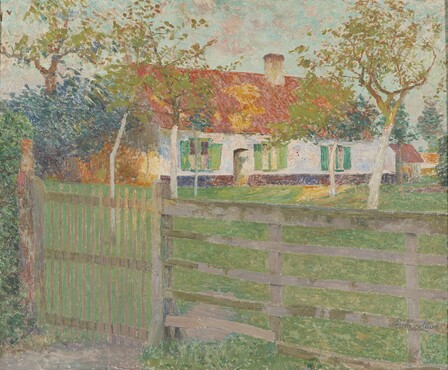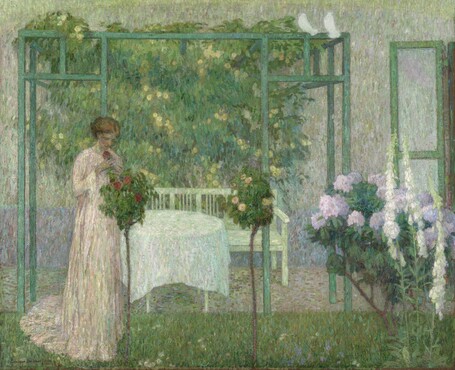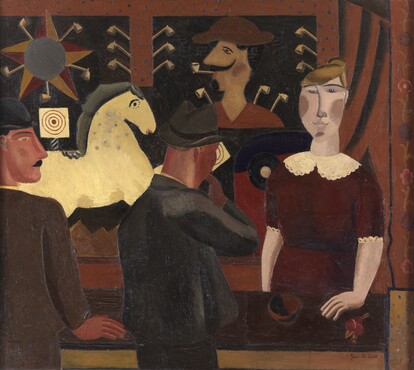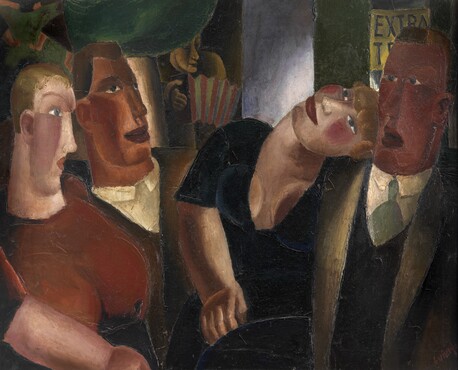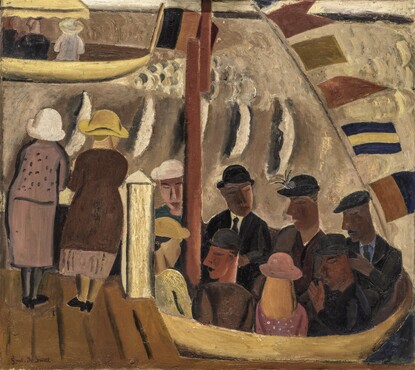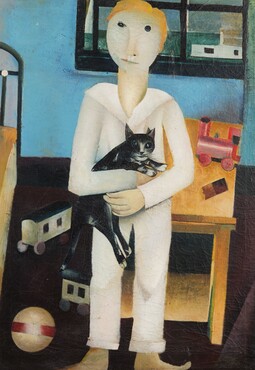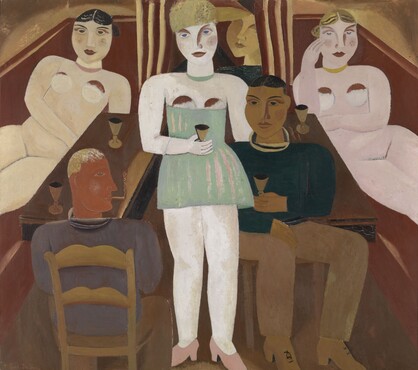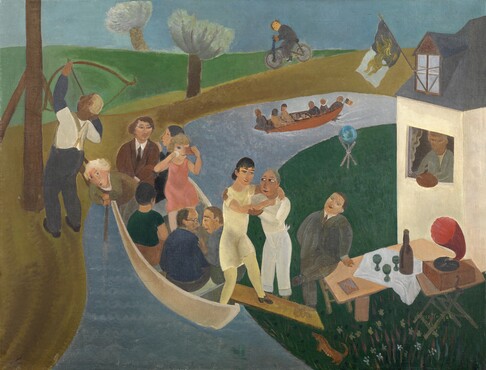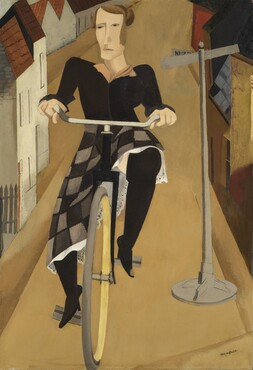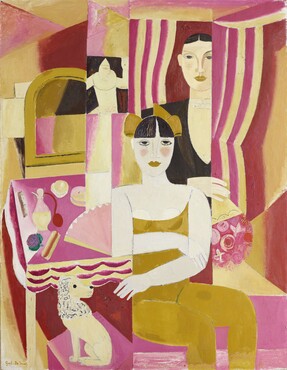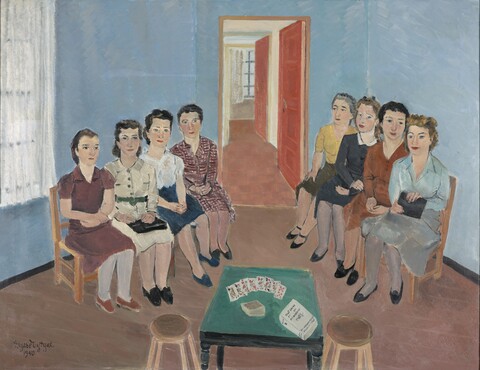Ontdek de collectie
Kunstmuseum Den Haag has a treasure chamber of over 160.000 pieces of art. Here we work on making the highlights from this collection available online.
Flemish Expressionism
Wonderful Memories
At first sight, the Roaring Twenties seem a world away from the Flemish countryside in the aftermath of the First World War. But if you listen carefully, you can hear the strains of jazz crossing the Leie river... The modern world is making inroads, also in the paintings of Gustave De Smet (1877-1943) and Frits Van den Berghe (1883-1939). They were the leading figures in what would come to be known as Flemish Expressionism and brought modern figurative painting in Belgium to its high point. Despite their idiosyncratic oeuvres, they exhibit a coherence in style and vision, especially in their simplification of forms, a strong emphasis on simple rural life and an unmistakable wit. It is the movement's colourful and often mischievous character that takes centre stage at Kunstmuseum Den Haag. The exhibition Flemish Expressionism - Wonderful Memories provides a broad overview of an important period in Flemish art with in addition to the work of Gustave De Smet and Frits Van den Berghe, paintings by Jozef Cantré (1890-1957), Constant Permeke (1886-1952) and Edgard Tytgat (1879-1957).
At the end of the 19th century, Belgium had a progressive and internationally oriented visual arts climate. Strangely enough, by the beginning of the 20th century little of this remained. The modern project became mired in an attractive but no longer innovative tendency called Luminism, with lightweight subjects, painted fleetingly and in pleasing soft tones. The leading exponent of the movement was Emile Claus (1849-1924), but Van den Berghe and De Smet also initially worked in this style. It was only when they fled to the Netherlands, which remained neutral during the First World War, that they came into contact with international modernism, and it wasn’t long before they began to incorporate these influences in their own work.
Upon their return to Belgium in 1922, they discovered that their old friend, Constant Permeke (1886-1952), and other painters had gone through a similar development. Slowly but surely, the modern world was reaching the villages along the Leie – popular with artists since the end of the 19th century – now also through modern art. The artists gathered in the villa of the multifaceted art patron Paul-Gustave Van Hecke (1887-1967). It is in this period that the term Flemish Expressionism was born.
Flemish Expressionism
Today, the term Flemish Expressionism may seem a little confusing because it immediately evokes an association with German Expressionism. However, at the beginning of the 20th century, the term ‘Expressionism’ was regularly applied to many kinds of ‘modern’ art that differed from Impressionism, or in the case of the Leie region, that was distinct from the Luminism of Emile Claus. It was applied not only to the German Expressionists, but also to the French Fauves and Cubists, the Italian Futurists and to the pioneers of abstract art. In this sense, Expressionism was a catch-all name for innovative modern art.
Popular Pleasures
All the aforementioned styles or movements exerted an influence on modern Belgian figurative painting. For example, we can recognise the simplification of forms of French Cubism and the intensity of German Expressionism in the work of De Smet and Van den Berghe. For both these artists, a vital impulse was the ‘popular’ theme of peasants and workers, who embodied purity and honesty, as well as a comical aspect. In particular, the painters found their subjects in recreation: Sunday relaxation, village scenes and modern forms of entertainment and leisure. The largest part of the exhibition covers the heyday of Flemish Expressionism in the 1920s with masterpieces such as The Pleasure Boat (1925) and Lovers in the Village (1925).
In this context, Flanders is synonymous with ‘authentic’ life outside the big cities. De Smet and Van den Berghe translated everyday life into short stories: painted worlds that mix reality with poetry and wonderful memories. The artists viewed this world with humour and sometimes a little hauteur: they were ultimately middle-class urbanites.
Exhibition
The exhibition brings together approximately a hundred objects: mostly oil paintings, but also some sculptures and works on paper. The European modernist movements that inspired the Flemish Expressionists, such as German Expressionism and French Cubism, are extremely well represented in the adjacent permanent displays Discover the Modern, providing the ideal context for viewing this exhibition.
Catalogue and Children’s Book
The exhibition is accompanied by a richly illustrated catalogue, published by Hannibal Books, with contributions from Thijs de Raedt, curator of modern art at Kunstmuseum Den Haag, and guest curator Peter Pauwels. The catalogue will be available from mid-March. Een zomerse zondag (A Summer Sunday) by Gerda Dendooven is the latest in the series of popular children's art books that Kunstmuseum Den Haag has been publishing since 2010 in partnership with Uitgeverij Leopold.
Video: MotionShow

